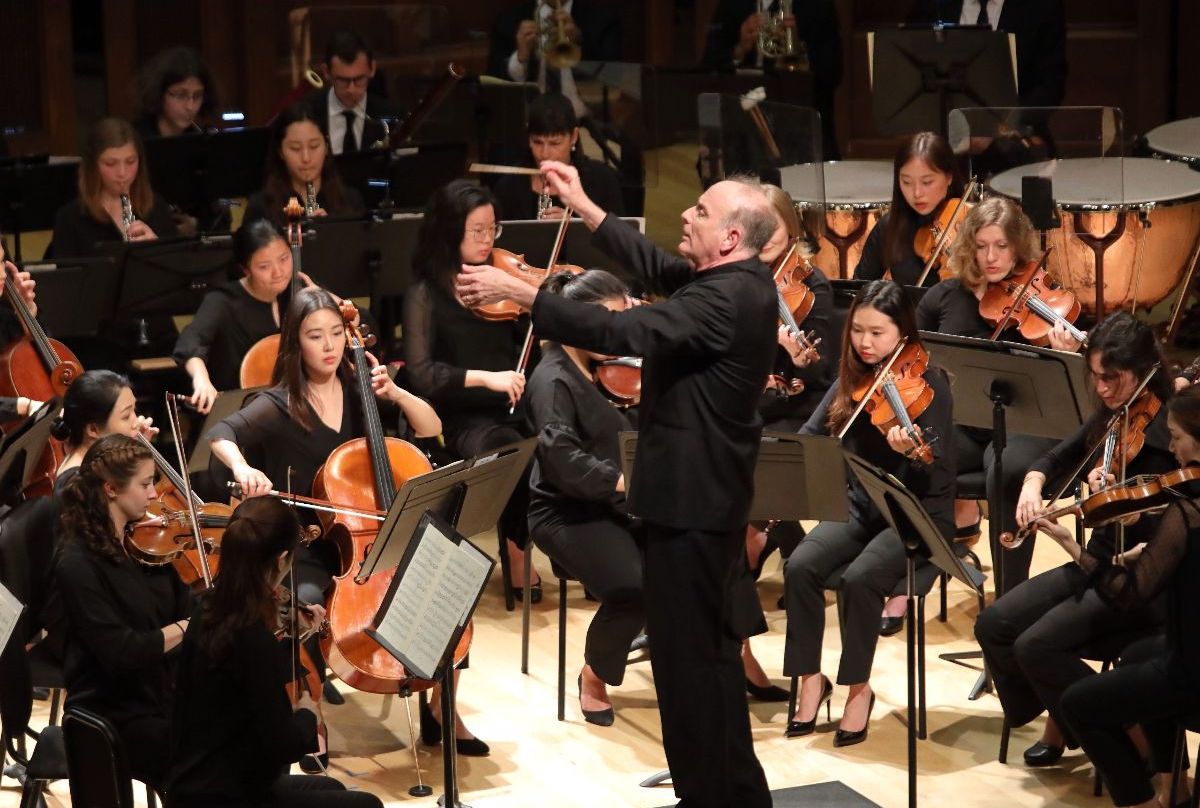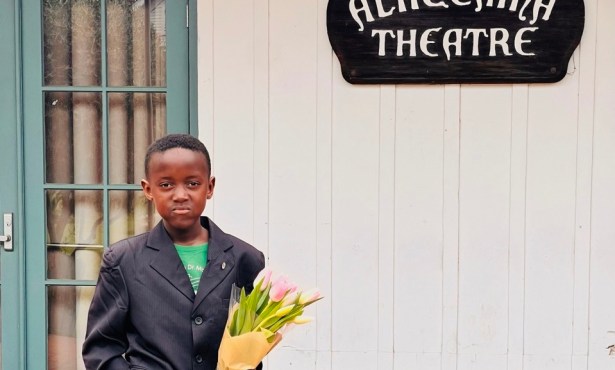Pano: Modern Music and Abstract Art in the 21st Century
‘Firebird Suite’ to Light Up Granada in Santa Barbara

MODERN TIMES
On Sunday, July 11, the Music Academy’s orchestra will light up the Granada stage in the first public performance there since March of 2020. Maestro Larry Rachleff will conduct a program that includes a short piece for brass called “Punch” by the Australian composer Katy Abbot, the Symphony No. 39 in E-flat major of Wolfgang Amadeus Mozart, and Igor Stravinsky’s Firebird Suite. In this summer’s new format, the orchestral concerts are presented in one act, without intermission, for approximately 75 minutes of music. In part, this decision represents an acknowledgement of the lingering dangers of COVID, but in many ways, even without this consideration, it’s a wise move that has a good chance of becoming permanent. The music offers so much richness and intensity that it may well be better served in shorter doses.
The Firebird Suite, composed in 1910 on a commission from the Ballets Russes, represents the initial collaboration between Stravinsky and Sergei Diaghilev’s revolutionary company. Stravinsky was still in his late twenties, and he approached the scenario, which was drawn from Russian folklore by the choreographer Mikhail Fokine, with a young artist’s passion and exuberance. Paris in 1910 could not have been more conducive to breaks from tradition. In the city of the then still relatively new Eiffel Tower, everything seemed possible, and unconventional artworks that embraced cultural globalization commanded unprecedented recognition and respect.
Listening to the Firebird today, one hears Stravinsky’s ravishing orchestration and command of the Russian folk tradition as harbingers of more radical music to come, yet there’s also a feeling of freedom that would not necessarily last. As with contemporary developments in the visual arts such as cubism, this is Modernism before it became codified into another style in the parade of art history. The challenge — and the fun — of hearing it today, performed by wonderful young musicians, many of whom were born in this century, is to let the music’s capacity to provoke the imagination emerge once more, like the beautiful rare bird of the title, with its fire-fangled feathers.
This edition of ON Culture was originally emailed to subscribers on April 12, 2024. To receive Leslie Dinaberg’s arts newsletter in your inbox on Fridays, sign up at independent.com/newsletters.
ABSTRACTION IN THE NEW CENTURY
Opening on Thursday, July 8, at the Westmont Ridley-Tree Museum of Art and running through August 14, there’s a painting show that you won’t want to miss. Dubbed Towards a 21st Century Abstraction and curated by critic Peter Frank, the exhibit features eight of the best abstract painters working today and gives viewers an opportunity to refresh and possibly revise their perception of this venerable form of visual art. Born as a specific and recognizable movement in art history at around the same time the Firebird was first performed, abstract painting today enjoys a widespread acceptance undreamed of by those who fought against the expectations of the public in the early 20th century.

While it’s hard for us today to recover the sense of urgency that surrounded significant departures from familiar means and styles in painting when abstraction first appeared, the normalization of these practices has by no means disarmed abstraction’s ability to communicate. Where there was once the shock of the new, there is now a distinguished vocabulary spread across multiple languages and idioms. Connie Connally paints with the gestural confidence of an old master, generating what has been called “plein air abstraction.”
Jeri Ledbetter manipulates color and line in much the same way that other painters ring changes on the distinction between figure and ground. Doug Trump’s notebook-like pages reveal the influence of Modernist collage, as do, in different ways, the works of Brad Ellis and Katherine Chang Liu. The tight, jigsaw precision of Sammy Peters’s layered paintings reveals a deft understanding of hue and saturation. David Bailin’s pentimenti of ghostlike figures reflect on the evanescence of memory. And, finally, the striking, jazz-influenced works of Wosene Kosrof, which were exhibited last season at Sullivan Goss to great acclaim, lend a sense of wonder to the proceedings.
CHINEKE! FOUNDER SPEAKS
Free and available online at musicacademy.org, the MAW Convocation Keynote address by Chi-chi Nwanoku on Monday, July 12, at 5 p.m. offers an opportunity to hear firsthand about what measures are being taken worldwide to diversify and augment the cultural inheritance of classical music. Nwanoku was featured in a lively discussion with Justin Rizzo-Weaver of the Community Arts Music Association during the pandemic as part of CAMA’s CAMA at Home series, and we are very fortunate to have her back in our musical lives.
ARTS & LECTURES AT THE MOVIES
For those who miss the free summer movies at the Courthouse sponsored by UCSB Arts & Lectures, there’s good news. The series continues this year at the West Wind Drive-In with even more generous helpings of family-friendly films. Thursday, July 8 offers a double feature of The Goonies (at 8:30 p.m.) and Stand By Me at 10:45 p.m. Bring a picnic, bring the kids, and enjoy film under the stars with Arts & Lectures.
Support the Santa Barbara Independent through a long-term or a single contribution.




You must be logged in to post a comment.